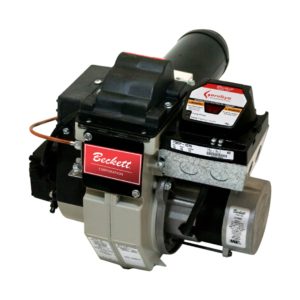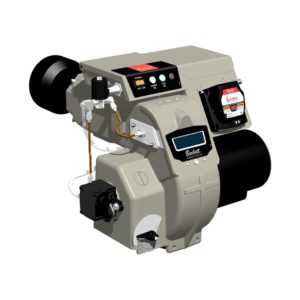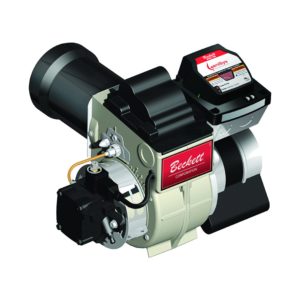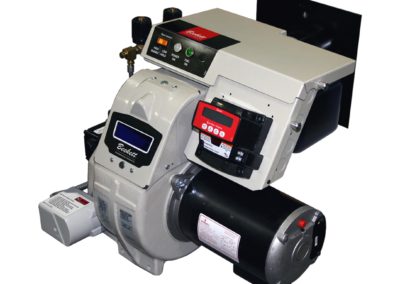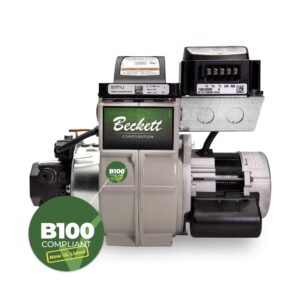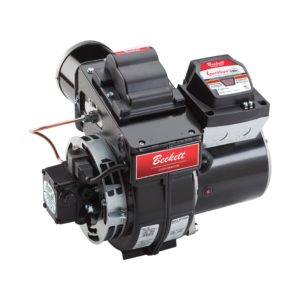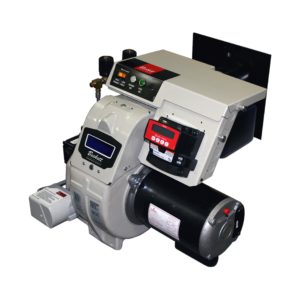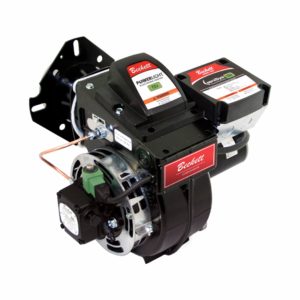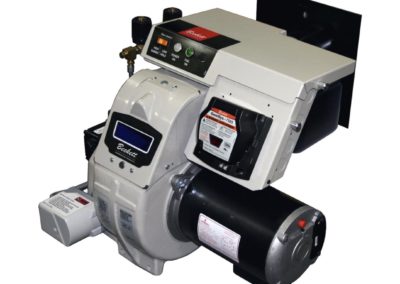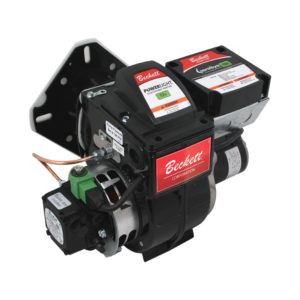Troubleshooting Guides
Oil Burner Guides
Commercial Guides
System Control Guides
Oil Burner Guides
AF/AFG, AFII, NX, SF/SM
CF375, CF500/800
1. Burner will not start
Symptom A:
No Lights on the GeniSys Primary Control
No power to burner
Action: Check voltage between L1 and L2 terminals. See the GeniSys Manual for details.
Additional Action: If no voltage is present, check voltage at the operating limit.
Symptom B:
The lights on the GeniSys Primary Control come on for 1 second when powered up, then turn off
Cause 1 – If this is a Boiler, limit not receiving voltage from boiler control
Action: Verify:
- There is a call for heat.
- There is a jumper wire between TW / TR.
- 120v is present at (L1 to L2) and (Limit to L2) of the GeniSys Primary Control.
Cause 2 – If this is a furnace, thermostats not closing the circuit
Action: Jumper TW and TR of the Primary Control. If the burner starts, then check your thermostat.
Additional Action:Also verify there is 120v at L1 to L2 and Limit to L2.
Symptom C
Flame light is on
The cad cell (flame detector) is seeing light
Action:
- Turn the power off to the burner. Loosen control. Verify there are not any exposed wires.
- Remove yellow cad cell wires from the back of the GeniSys Primary Control. Turn the power back on. The flame light should go out on the Primary Control
Additional Action: If the light remains on:
- Verify the cad cell is not seeing any apparent light.
- If the flame light remains on, replace the GeniSys Primary Control.
- If the light goes off, replace the cad cell (part number 7006U).
Notes: See the Cad Cell Tech Bulletin for more information.
Symptom D
Red reset button is blinking
The GeniSys Primary Control is in a soft lockout
Action: Press and hold the reset button for at least one second. This will reset the control. For more in-depth GeniSys troubleshooting, visit the System Controls GeniSys Series 7505, 7575, 7580 Troubleshooting section.
Notes: The GeniSys Primary Control may lock out for:
- Either an unacceptable flame signal.
- A flame during purge cycles.
- Too many recycle attempts.
- An ideal flame signal is 1600 Ohms or less.
See the Cad Cell Tech Bulletin for more information.
Symptom E
Red reset button stays on solid
The GeniSys Primary Control is in a hard lockout
Action:The Genisys Primary Control is in a Restricted (hard) lockout This means the control has locked out 3 times.
Additional Actions:Hold the reset button down for 15 seconds. When the reset light goes out, release the button. The control will reset. For more in-depth GeniSys troubleshooting, visit the System Controls GeniSys Series 7505, 7575, 7580 Troubleshooting section.
Notes:The pump prime light will turn on solid once the button is held for 15 seconds until the button is released. Refer to your GeniSys manual for more information. To help troubleshoot the GeniSys control more effectively, use our Contractor’s Tool (Part number 52082U).
2. Burner runs, ignites, then stops
Cause 1 – Flame is present but sensor has weak or intermittent signal
Action: Check and correct flame sensing circuit (cad cell and wiring).
Notes: See the Cad Cell Tech Bulletin for more information.
Cause 2 – Burner setup out of recommended adjustments
Action: Verify burner specs.
Notes: Refer to our Residential Oil Specification Guide to see start up settings.
Cause 3 – Flame failure
Action: Check and correct:
- Fuel supply.
- Proper flue draft and chamber draft.
- Nozzle and air settings.
- See if a low firing rate baffle is required for this burner combination.
- Verify electrode condition and settings
Notes: Refer to our Residential Oil Specification Guide to see start up settings.
Cause 4 – Lack of retention
Action:
- Check chamber.
- Draft oil supply, 3 nozzle spec.
Notes: For more information about the Low Firing Rate Baffle (click here).
3. Nozzle Afterdrip
Cause 1 – Air entrapped in the nozzle line assembly / Air in oil supply
Action: Bleed pump, Check for air in oil supply line by putting a clear hose on the pump bleeder port.
Notes: Refer to the Nozzle Afterdrip Tech Bulletin for more information.
Cause 2 – Oil expansion in the nozzle line assembly, due to radiated heat at shutdown
Action:
- Lower the CO2 by increasing air settings.
- Put a post purge on control to remove excess heat.
Notes: Refer to the Nozzle Afterdrip Tech Bulletin for more information.
Cause 3 –
- A defective pump shut-off valve
- Solenoid stuck open
- Debris in solenoid
Action: Loosen 1/8″ high pressure copper line and if oil is leaking through, replace valve or pump with solenoid valve.
Notes: Refer to the Nozzle Afterdrip Tech Bulletin for more information.
4. Flue gas analysis not correct
Cause 1 – High CO
Recommended CO is less than 50 PPM, and usually 10 PPM or less. If greater, possible causes are:
- Excess air
- Improper CO2 as recommended by the appliance manufacturer
- Check the appliance manual for recommended CO2
- Heat exchanger leaks
- Insufficient combustion air supply
Action: Check and correct:
- Blocked flue, heat exchanger and chimney.
- Burner head and nozzle combination.
- Insertion depth in short furnaces.
- Flame impingement on damaged refractory.
- High draft (pulling partially burned products from the base of the flame).
- Cold furnace.
- Greatly oversized furnace.
Notes: Refer to our Residential Oil Specification Guide to see start up settings.
Cause 2 – CO2 – too high with air settings at specified opening
Also O2 – too low with air settings at specified opening
- Inadequate air supply to boiler room
- Boiler / furnace draft
- Firing rate is not correct
Action: Pre-set air settings are approximate for start-up. Refer to the appliance manual for recommended set-up procedure.
Notes: Refer to our Residential Oil Specification Guide to see start up settings.
5. Unable to obtain a zero smoke
Refer to our Residential Oil Specification Guide to see start up settings. Reference NFPA 31 Standard for the Installation of Oil-Burning Equipment.
Cause 1 – Not enough combustion air
Action: Check and correct:
- Adequate combustion air to support all equipment.
- Full opening of burner’s air shutter and band.
- Debris obstructing air shutter and band.
- Correct air guide or inlet.
- Blower wheel not tight on motor shaft, correct blower wheel adjustment.
- Combustion air leakage from burner.
- High furnace pressure.
Notes: Refer to the Combustion Air Requirements Tech Bulletin for more information.
Cause 2 – Fouled Nozzle
Action: Replace nozzle.
Notes: Refer to our Residential Oil Specification Guide to see start up settings.
Cause 3 – Air in oil supply
Action: Run a vacuum test, Use a clear hose on the pump bleeder port to see if there is air present.
Notes: Refer to the Suction Line Leaks Tech Bulletin for more information.
Cause 4 – Wrong burner specifications
Action: Refer to the Appliance manual.
Notes: Refer to our Residential Oil Specification Guide to see start up settings.
Cause 5 – Plugged heat exchanger
Action: Check chamber and breech draft.
Notes: Refer to the Appliance manufacturer for recommended draft settings.
Cause 6 – Fuel Quality
Action: Test with alternate source of fuel.
Notes: Refer to the Oil Quality Tech Bulletin for more information.
Cause 7 – Cracked heat exchanger
Action: Replace chamber.
Cause 8 – Flame impingement
Action: Check nozzle, draft and combustion chamber.
Cause 9 – Head and nozzle not correctly paired
Action: Verify your components are correct.
Notes: Refer to our Residential Oil Specification Guide to see start up settings.
6. Burner has a whining noise while running
Cause 1 – Air in the pump
Action: Check for air in the fuel supply line. Bleed the oil pump.
Additional Action: If noise persists, put on a vacuum gauge at the fuel pump’s inlet to see if there is a restriction in the oil supply line.
Notes: For additional potential causes, see our technical bulletin for Locating Suction Line Leaks.
Cause 2 – Worn Motor Bearings
Action: Replace Motor.
7. Vibration of burner
Symptom A
Burner shakes whenever blower runs
Cause 1 – Issues with the Blower Wheel or Housing
Action:
- Check that the blower wheel is tight on the motor shaft.
- Check for warpage or damage to blower wheel.
- Make sure the motor is seated properly on the housing.
- Make sure motor bolts are evenly tightened.
- Check for debris in burner housing.
- Check the fit of the motor to housing and for potential damage to the housing.
- Check shaft alignment.
- Make sure the coupling is not too tight.
Notes: Refer to the burner manual for the proper gap of the blower to motor flange surface.
Commercial Guides
CG Series
1. Burner will not start
Symptom A
No lights, no blower
Cause 1 – No power to burner
Action:
Correct power supply.
Notes:
RM7800 Display Module is available for more in depth troubleshooting codes. (Part number 7542U).
Cause 2 – CG15, CG25 and CG50: Power to motor but no power to control
Action:
Wire the control as shown on the schematic (110 v control power is generally separate from high voltage motor power).
Notes:
The basic wiring schematics are located in the appropriate burner’s manual. Refer to the manuals for each burner for more information.
CG15 Gas Burner | 560 to 1,500 MBH | AC Power
CG25 Gas Burner | 990 to 2,700 MBH | AC Power
CG50 Gas Burner | 1,400 to 5,000 MBH | AC Power
Cause 3 – Control circuit fuse blown
Action:
Replace fuse.
Cause 4 – Flame safeguard is defective
Action:
Verify the control is receiving voltage.
Notes:
Replace flame safeguard.
Symptom B
Power light is on but no blower
Cause 1 – Limit string not completed
Action:
Trace limit string with multimeter and correct.
Notes:
Verify there is 120v to terminals L2 and 6 on the subbase of the control.
Cause 2 – Blower motor is defective
Action:
Check and correct blower motor condition.
Cause 3 – Flame safeguard is defective
Action:
Replace flame safeguard.
Symptom C
Power light and alarm light are on but no blower
Cause 1 – One of the configuration jumpers has been changed after 200 hours of operation
Action:
Replace flame safeguard.
Notes:
Examples are: Resistors JR1, JR2 and JR3.
Cause 2 – No power to blower motor
Action 1 – CG10 Burner Models:
When the limit string is complete, 120v is sent from terminal 5 of the controller subbase to the blower motor. Verify that voltage is present. If voltage is present:
- Verify wiring to the motor is correct.
- Make sure the motor spins freely.
- The CG10 replacement part number is 21341U.
Action 2 – CG15, CG25 and CG50 Burner Models:
When the limit string is complete, 120v is sent from terminal 5 of the controller subbase to the motor contactor coil. Verify that voltage is present. If voltage is present:
- Verify wiring to the motor contactor is correct.
- If the motor contactor is operating correctly, make sure the motor spins freely.
- Refer to the manuals for each burner for replacement parts or Find a Part here
Additional Action:
Is jumper JR3 of RM7897 clipped? If so, check and correct: power supply to blower motor, control signal to starter or contactor, overload trip.
Notes:
Is JR3 intact? Burner would not have locked out.
Cause 3 – Power to ignition or fuel valve circuits before completion of purge
Action:
Check and correct ignition and fuel valve wiring, re-set flame safeguard.
Cause 4 – Flame detected during stand-by for more than 30 seconds.
Action:
Check furnace for flame or stray UV source (bright light or spark) – correct and re-set flame safeguard.
[/column][/column-group] [column-group][column]
Cause 5 – Blower motor is defective
Action:
Is jumper JR3 of RM7897 clipped? If so, check and correct blower motor condition. If not, burner would not have locked out.
Cause 6 – Flame safeguard purge card is defective or missing
Action:
Replace purge card, re-set flame safeguard.
Cause 7 – Low voltage/line noise/incorrect frequency
Action:
Check and correct electrical power supply, re-set flame safeguard.
Cause 8 – RM7840L Preignition interlock (proof of closure valve) is open 30 seconds
Action:
Check and correct POC switch, adjustment and wiring. Re-set flame safeguard.
Cause 9 – RM7840L interlock check lockout
Action:
Is jumper JR3 of RM7840L clipped? If so, check and correct all interlocks for correct status (at least one failed). If not, this does not apply.
Cause 10 – Flame safeguard is defective
Action:
Replace flame safeguard.
2. Blower motor starts and continues running but burner will not light
Cause 1 – Airflow switch not closing
Action:
Has jumper JR3 been clipped? If so, burner would have locked out after 10 seconds of not proving air flow.
Notes:
Is jumper JR3 Intact? If so, burner would have locked out after 4 minutes of not proving air flow. Check and correct blower wheel, air switch sensing lines, wiring, and air switch setting.
Cause 2 – Flame safeguard run/test switch is in test position
Action:
Change switch position to run.
Notes:
This is located on the top of the 7800 Control.
Cause 3 – Flame safeguard is defective
Action:
Replace flame safeguard.
3. Blower motor starts, burner does not light, flame safeguard locks out (alarm light on)
Cause 1 – Fault in ignition circuit or a weak spark
Action:
Check and correct ignition transformer, high tension wire, electrode settings, flame safeguard ignition circuit and wiring.
Notes:
The flame establishing period is 4 seconds. If no spark is present during this period, replace the ignition transformer. Part number 51976U (CG15, CG25 and CG50). Part number 52014U (CG10).
Cause 2 – Inadequate fuel supply to burner
Action:
Check and correct manual and electric valves in gas train, gas supply to train.
Cause 3 – Flame detected during purge
Action:
Check furnace for flame or stray UV source (bright light or spark) – correct.
Cause 4 – Flame not detected within 4 seconds of energizing fuel valves
Action:
Observe the furnace for flame. If present: check and correct flame rod or scanner, amplifier and wiring; for flame rod, verify grounding of flame rod circuit at sub-base.
Notes:
Observe the furnace for flame. If not present: check and correct fuel supply and gas train (including length from last valve to manifold), air settings, draft and blower, and ignition system and electrodes.
Cause 5 – Power to ignition or fuel valve circuits before completion of purge
Action:
Check and correct ignition and fuel valve wiring.
Cause 6 – Flame safeguard purge card is defective or missing
Action:
Replace purge card, re-set flame safeguard.
Cause 7 – Airflow switch not closed within 10 seconds
Action:
Is the control RM7840L (or RM7897 with jumper JR3 clipped)? If so, check and correct blower wheel condition and tightness, air switch function, wiring and setting. If not, burner would not have locked out.
Cause 8 – RM7840L open damper purge circuit not proving in 4 min 15 sec.
Action:
Check and correct damper travel is unobstructed, damper motor end switch setting, wiring.
Cause 9 – RM7840L low fire start circuit not proving in 4 min 15 sec.
Action:
Check and correct damper motor end switch wiring.
Cause 10 – RM7840L preignition interlock (proof of closure valve) opens during prepurge
Action:
Check and correct POC switch, adjustment and wiring. Re-set flame safeguard.
Cause 11 – Flame safeguard is defective
Action:
Replace flame safeguard.
4. Burner runs, then stops and re-cycles
Cause 1 – Flame is present but sensor has weak or intermittent signal
Action:
Check and correct flame sensing circuit – flame rod or scanner, amplifier and wiring. For flame rod, verify grounding of flame rod circuit at sub-base.
Cause 2 – Flame failure
Action:
Check and correct fuel supply, air damper settings, blower wheel and motor, furnace draft
Notes:
Refer to our Commercial Gas Specification Guide to see start up settings.
Cause 3 – Low voltage for less than 4 minutes
Action:
Check and correct power supply to burner.
5. Burner runs, then stops and flame safeguard locks out (alarm light on)
Cause 1 – Low voltage for more than 4 minutes
Action:
Check and correct power supply to burner, re-set flame safeguard.
Cause 2 – Power to ignition circuit during run interval
Action:
Check and correct ignition wiring, re-set flame safeguard.
Cause 3 – Flame safeguard purge card is defective or missing
Action:
Replace purge card, re-set flame safeguard.
Cause 4 – Flame failure
Action:
Is the control RM7840L or RM7897 with jumper JR2 clipped? If so, check and correct:
- Flame sensing circuit – flame rod or uv scanner.
- For flame rod, verify grounding of flame rod circuit at sub-base. Otherwise control recycles on flame failure.
Cause 5 – Flame is present but sensor has weak or intermittent signal
Action:
Is the control RM7840L or RM7897 with jumper JR2 clipped? If so check and correct:
- Flame sensing circuit – flame rod or uv scanner.
- For flame rod, verify grounding of flame rod circuit at sub-base. Otherwise control recycles on flame failure.
Cause 6 – Airflow switch not closing
Action:
Is control RM7840L (or RM7897 with jumper JR3 clipped)? If so, check and correct blower wheel condition and tightness, air switch function, wiring and setting. If not, burner would not have locked out.
Cause 7 – RM7840L low fire switch open during main flame establishing period
Action:
Check and correct air damper motor low fire switch and wiring, and air damper obstruction.
Cause 8 – Flame safeguard is defective
Action:
Replace flame safeguard.
6. Burner runs, then stops and locks out during postpurge (RM7840L) (alarm light on)
Cause 1 – RM7840L Preignition interlock (proof of closure valve) is open 5 seconds after run interval
Action:
Check and correct: POC switch, adjustment and wiring. Re-set flame safeguard.
Cause 2 – Power to ignition or fuel valve circuits during postpurge
Action:
Check and correct: ignition and fuel valve wiring, re-set flame safeguard.
Cause 3 – Flame safeguard purge card is defective or missing
Action:
Replace purge card, re-set flame safeguard.
7. Burner runs at low fire rate but air damper will not go to high fire (low/high/low control)
Cause 1 – Boiler rate control wiring is in open position, preventing high fire
Action:
Trace power through rate control wiring to determine where power is lost – flame safeguard terminal – burner low fire switch – boiler rate control switch(es) – low air relay – correct as required to power damper motor.
Cause 2 – Damper motor is powered but will not move
Action:
Check for binding in damper – replace damper motor if required.
Cause 3 – Flame safeguard terminal is not powered
Action:
Verify correct wiring, replace flame safeguard.
8. Burner runs at low fire rate and air damper goes to high fire position but fuel valves will not go to high fire position (low/high/low control)
Cause 1 – High fire fuel valve is not being powered
Action:
Trace power through fuel valve wiring to determine where power is lost – from flame safeguard to damper motor – damper motor switch – fuel valve wiring – correct as required to power fuel valve.
Cause 2 – High fire fuel valve is powered but fuel pressure does not increase
Action:
Check high fire fuel pressure regulator setting – if it’s correct replace the high fire fuel valve.
9. Noise from burner
Cause 1 – Rubbing noise from blower wheel
Action:
Check and correct: wheel set screw tightness, wheel-to-motor plate and wheel-to-inlet guide clearances, wheel integrity.
Cause 2 – Air in-rush noise at damper
Action:
Check and correct: damper obstructions, damper blade tightness on shaft, low fire firing rate (too low causes noise).
Cause 3 – Harsh combustion noise
Action:
Check and correct: firing rate (too high causes noise), O2 level (excessive air causes noise), head setting adjustment.
Cause 4 – Combustion rumble/pulsation – continuous
Action:
Check and correct:
- Draft is too high (tall stack, inadequate draft controls)
- Excess air too high, head setting, gas spud obstruction
- Correct blower wheel size
- supply pressure to gas train (high or very low pressure drop across regulator)
- pressure fluctuations coming to gas train from oversized supply regulator,
- pressure fluctuations coming to furnace from flue stack (add a barometric)
- un-approved boiler application (furnace too small)
[column-group][column]
Cause 5 – Rumble or roar at light-off (Rough light-off)
Action:
Check and correct: Draft is too high (tall stack, inadequate draft controls), lightoff rate is too high (check manifold pressure at light-off), ignition electrodes are worn or incorrectly set, incorrect burner head and/or head setting, high excess air, incorrect application (furnace too small), “feedback” resonance from stack (add a barometric).
Cause 6 – “Trumpet” at lightoff
Acton:
Slight trumpet (barely audible, lasts < 5 seconds) is considered a normal condition, don’t worry about it. Pronounced trumpet – treat as rumble or roar.
Cause 7 – Alarm siren/bell
Action:
Check and correct lockout condition.
10. Odor around burner / boiler
Cause 1 – “Rotten egg” odor – gas
Acton:
DO: Call your gas supplier from a phone outside the building and follow his instructions. Call the fire department if you cannot contact your supplier.
DO NOT touch any electrical switch, try to light any appliance, or use any phone in the building.
Cause 2 – Sharp pungent odor, burns eyes – aldehydes formed with carbon monoxide
Action:
Take corrective action gradually to avoid explosion hazard. Check for not enough air or too much gas: inadequate air supply to boiler room, obstructed or incorrectly adjusted air inlet to burner, blocked or incorrectly adjusted stack vent, excessive gas pressure to train, seized or incorrectly adjusted gas pressure regulator.
11. Vibration of burner
Cause 1 – Blower or motor imbalance (burner shakes whenever blower runs)
Action:
Check that blower is tight on motor shaft, has no missing balance weights, no obvious damage to blower wheel.
Cause 2 – Combustion pulsation (burner shakes when burner is firing)
Action:
Check and correct: excess air level, head setting, gas spud obstruction, correct blower wheel size, supply pressure to gas train (high or very low pressure drop across regulator), pressure fluctuations coming to gas train from oversized supply regulator, pressure fluctuations coming to furnace from flue stack (add a barometric), un-approved boiler application (furnace too small).
12. Flame appearance not right
Cause 1 – Flame size – too big
Action:
Check and correct: excess air is low (low O2 or high CO2), rate is high, operation at high elevation (flame expands in low barometric pressure), flue gas recirculation, cold furnace.
Cause 2 – Flame size – too small
Action:
Check and correct: excess air is high (high O2 or low CO2), rate is low, furnace has a lot of refractory (re-radiated heat speeds up flame and shrinks its size).
Cause 3 – Lopsided flame – not centered in furnace
Action:
Check and correct: burner head not centered in air tube, gas orifice obstructed, furnace flow pattern (flame drawn toward furnace outlet), furnace refractory pattern (re-radiated heat from refractory speeds up flame), flame buoyancy in furnace (greater influence in cold furnace).
Cause 4 – Flame color – too yellow
Action:
Always use properly calibrated instruments to set combustion. Some yellow in flame is normal. Yellow flames could indicate fuel composition has changed (gas utility injects propane into natural gas for low ambient conditions), low excess air, use of FGR to reduce NOx, reduced mixing rate (head setting too far open).
Cause 5 – Flame color – reddish blue
Action:
Always use properly calibrated instruments to set combustion. Reddish blue flames could indicate higher than normal firing rate, or normal firing in a refractory lined chamber.
Cause 6 – No swirl in flame
Action:
Normal condition for all of our “step spud” burners (all models offer this design). Only our CG10.1 through CG10.3 offer a swirling flame, and the swirl level in that design is small.
13. Flue gas analysis not right
Cause 1 – High CO
Action:
Normal CO for cast iron boilers is less than 50 PPM, and usually 10 PPM or less at high fire. If greater, check and correct: excess air (O2 or CO2), burner head selection and setting, insertion depth in short furnaces, flame impingement on damaged refractory, high draft (pulling partially burned products from the base of the flame), missing or damaged O-rings on the gas gun, cold furnace, greatly oversized furnace.
Cause 2 – O2 – too low at high fire with damper at specified opening
Also CO2 – too high with damper at specified opening
Action:
Specified damper opening is a guideline for start-up; don’t be afraid to change it. Normal O2 at high fire is 3 to 4% (CO2 is 9.5 to 10%). If less O2 (more CO2), check and correct: adequate air supply to boiler room, boiler furnace pressure, firing rate (preferably by clocking a meter, but also compare to data in burner manual), calibration of analyzer, burner head selection and setting.
Cause 3 – O2 – too high at low fire with damper at specified opening
Also CO2 – too high with damper at specified opening
Action:
Specified damper opening is a guideline for start-up, don’t be afraid to change it. Normal O2 at low fire is 4 to 5% (CO2 is 8.9 to 9.5%). If more O2 (less CO2), check and correct: stack draft (barometric control is recommended for stacks over 10′ tall), firing rate (preferably by clocking a meter, but also compare to data in burner manual), calibration of analyzer, burner head selection and setting.
Cause 4 – O2 (CO2) – outside specified range during modulation
Action:
The burner manual has a section devoted to modulation adjustments – work from it.
[/column][/column-group] [column-group][column]
Cause 5 – O2 (CO2) – changes from one day to the next
Action:
Changes of about 1% O2 (0.5% CO2) are normal. They are caused by changes in fuel properties (utilities change gas properties in response to available supplies and outdoor temperature), air density changes (barometric pressure, temperature, moisture content), and boiler draft changes (outdoor temperature and wind conditions). If O2 (CO2) changes exceed 1% look for mechanical problems with fuel pressure regulation, draft control, or the burner’s blower and damper systems. A service log of burner settings and performance is recommended.
14. Rated capacity not attainable
Cause 1 – Not enough gas pressure to make rate (high O2 at high fire)
Action:
Check and correct: incoming gas pressure at rate, full open position on all manual valves, pressure drop across each SSOV, debris in gas line.
Cause 2 – Not enough air to make rate (low O2 at high fire)
Action:
Check and correct: adequate ventilation to support all boiler room equipment, high furnace pressure, burner head setting, full opening of burner air damper, debris obstructing air damper, correct air guide or inlet sleeve, blower wheel not tight on motor shaft, correct blower wheel adjustment, combustion air leakage from burner, scroll extension in place in CG10, correct 3 phase motor rotation, blower wheel damage.
15. Manifold pressure is low
Cause 1 – Low rate (regulator un-adjusted)
Action:
Clock firing rate and adjust gas pressure regulator for higher pressure.
Cause 2 – Low rate (regulator bottomed out)
Action:
Verify correct regulator / adjustment spring selection, gas train selection, gas train component pressure drops, supply pressure to the gas train (at rate).
Cause 3 – Low furnace pressure (rate checked OK)
Action:
Check and correct: high draft (no barometric?), breech damper too far open, low boiler draft loss (missing spinners / turbulators / baffles).
Cause 4 – Incorrect or defective burner head
Action:
Check burner head identification and orifice sizes.
16. Manifold pressure is high
Cause 1 – High rate (regulator un-adjusted)
Action:
Clock firing rate and adjust gas pressure regulator for lower pressure.
Cause 2 – High rate (regulator fully backed out)
Action:
Verify correct regulator / adjustment spring selection.
Cause 3 – High furnace pressure (rate checked OK)
Action:
Check and correct: low draft (stack size?), breech damper too far closed, high boiler draft loss (incorrect spinners / turbulators / baffles, dirty boiler), flue gas analysis (high O2?).
Cause 4 – Incorrect or defective burner head
Action:
Check burner head identification and orifice sizes.
System Control Guides
GeniSys Series 7505, 7575, 7580
1. No lights on the Genisys Primary and no outputs are energized
Cause 1 – Verify the control has voltage to L1 and L2
Action:
Check your incoming voltage to L1 and L2.
Notes: Refer to your GeniSys manual for more information. To help troubleshoot the GeniSys control more effectively, use our Contractor’s Tool (Part number 52082U).
Cause 2 – If this is a Boiler, the limit circuit of the Genisys Control is not receiving voltage from the boiler control
Action: Verify:
- There is a call for heat.
- There is a jumper wire between TW / TR.
- 120v is present at (L1 to L2) and (Limit to L2) of the Genisys Primary Control.
Notes: Refer to your GeniSys manual for more information. To help troubleshoot the GeniSys control more effectively, use our Contractor’s Tool (Part number 52082U).
Cause 3 – If this is a furnace, the thermostat is not closing the circuit
Action:
- Jumper TW and TR of the Genisys Control. If the burner starts, then check your thermostat.
- Verify there is 120v at L1 to L2 and Limit to L2
Notes: Refer to your GeniSys manual for more information. To help troubleshoot the GeniSys control more effectively, use our Contractor’s Tool (Part number 52082U).
2. Flame light is on
Cause 1 – The cad cell (flame detector) is seeing light?
Action:
- Turn the power off to the burner, loosen control, and verify there are not any exposed wires.
- Remove (yellow) cad cell wires from the back of the Genisys Primary Control, Turn the power back on, The flame light should go out on the Primary Control.
Notes: Refer to your GeniSys manual for more information. To help troubleshoot the GeniSys control more effectively, use our Contractor’s Tool (Part number 52082U).
3. Red reset button is blinking
Cause 1 – The Genisys Primary Control is in a soft lockout
Action:
Press and hold the reset button for at least one second. This will reset the control.
Additional Actions: The Genisys Primary Control may lock out for:
- Either an unacceptable flame signal.
- A flame during purge cycles.
- Too many recycle attempts.
- An ideal flame signal is1600 Ohms or less.
For more possible causes, see the “Troubleshooting an Oil Burner” tech bulletin.
Notes: Refer to your GeniSys manual for more information. To help troubleshoot the GeniSys control more effectively, use our Contractor’s Tool (Part number 52082U).
4. Red reset button stays on solid
Cause 1 – The Genisys Primary Control is in a hard lockout
Action:
The Genisys Primary Control is in a Restricted (hard) lockout This means the control has locked out 3 times.
Additional Actions:
Hold the reset button down for 15 seconds. When the reset light goes out, release the button. The control will reset. For more possible causes, see the “Troubleshooting an Oil Burner” tech bulletin.
Notes: The pump prime light will turn on solid once the button is held for 15 seconds until the button is released. Refer to your GeniSys manual for more information. To help troubleshoot the GeniSys control more effectively, use our Contractor’s Tool (Part number 52082U).
5. Pump Prime mode or the pump prime light is on inadvertently
Cause 1 – The Genisys is put into this state by:
- Hold down the reset button for 15 seconds.
- Release the reset button.
- Then pressing the reset button again while the ignition is on and releasing.
Action:
- Press the reset button again to get it out of this state.
- Removing the call for heat will also get you out of the pump prime mode.
Notes: Refer to your GeniSys manual for more information. To help troubleshoot the GeniSys control more effectively, use our Contractor’s Tool (Part number 52082U).
6. Green flame light is flashing
Cause 1 – The green flame light flashing would indicate that the burner lost flame or lost sight of the flame. Likely causes are:
- Bad CAD cell.
- Poor flame sighting.
- Flame lifting off the head.
- Air in the line.
Action:
For possible causes, see the “Troubleshooting an Oil Burner” tech bulletin.
Notes: Refer to your GeniSys manual for more information. To help troubleshoot the GeniSys control more effectively, use our Contractor’s Tool (Part number 52082U).
Beckett Training is Now Online
Informative and technical training resources from the leading experts in the heating industry
We're Here to Help!
Have questions about our products? Looking for a solution to address a particular application? Looking to improve the overall productivity and profitability of your operation? Please don’t hesitate to reach out or schedule a no obligation, 1-on-1 consultation with a Beckett Technical Specialist — we’d love to help.
Where to Buy
Beckett solutions are available through our network of Distributors, Independent Representatives, and Export Representatives all around the world.

